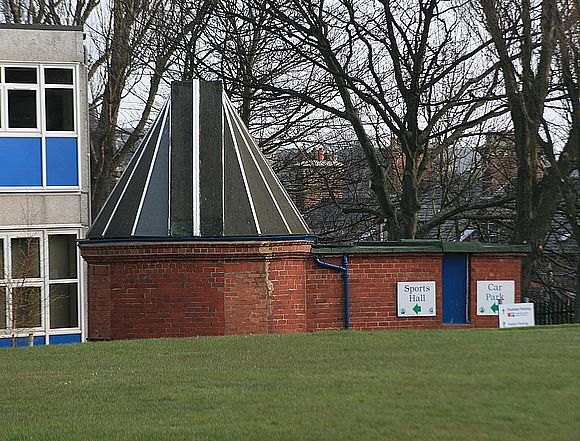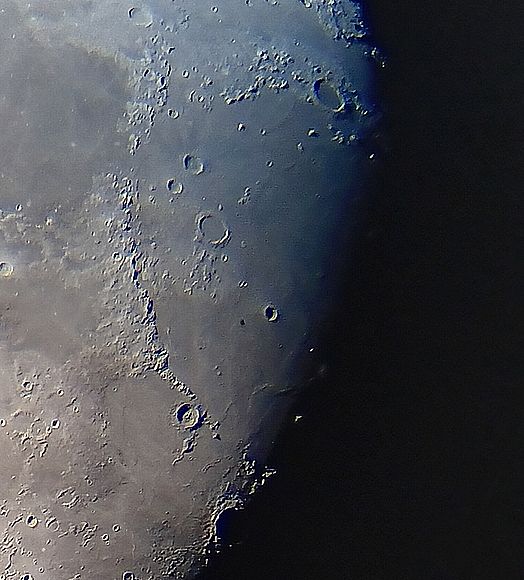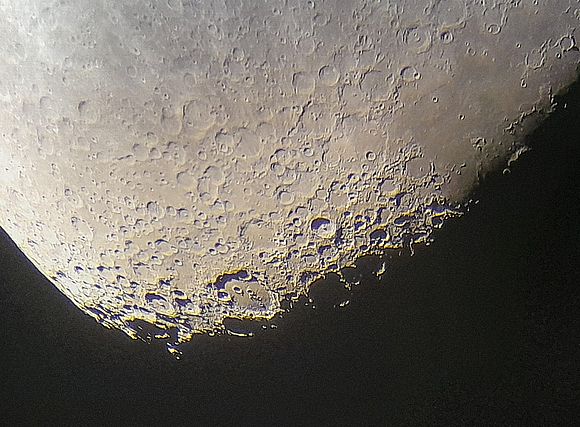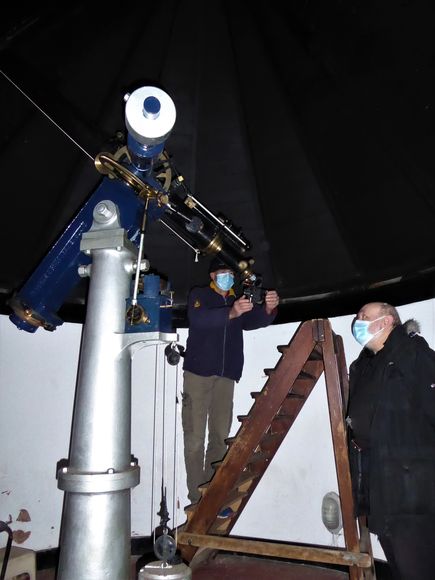The Bruce Observatory is sited within Caedmon College grounds (formally Whitby College, formally Whitby School) and is from where we conduct observations of the night sky on a 'semi-regular' basis. (or at least try to). When conditions allow, the vintage long focal length 5" Cooke refractor is excellent for Lunar and planetary observations - sometimes exceptional.
Open to society members and public alike, each Sunday evening from October to April (barring a few dates) is scheduled for observations. Every Sunday evening? Mmm, well in practice weather conditions on the North Yorkshire coast yield much lower success rates. Indeed, data suggests that over the last autumn/winter period from these parts, only around 15% of evenings have been clear, the observatory dome bolted shut from Nov 12th to February 11th. Frustrating to say the least.
We were beginning to think it was personal, when finally, February 18th saw clear conditions, with Mark and John L opening the dome for the first time in 2024! Jupiter, and the quarter Moon were the chief targets, along with the Orion Nebula - M42. Also tracked down was Uranus, which took a little doing, but eventually we were satisfied we had acquired the small ghostly green disk of 'Herschel's planet' in the eyepiece. The Moon was particularly mesmerising, a fantastic sight through the eyepiece (12.5mm, 17mm and 21mm in particular). Trying some ad hoc imaging with phone cameras held against the eyepiece, yielded some half decent results.
The incredible Lunar surface at first Qtr.
Eratosthenes crater and Apennines peninsular visible. Image M Dawson.
(Click to see full image)
Clavius crater -with arc of craters across floor - Quite splendid. Image John Lamb.
(Click for full image)
After a full 2-hour session on Feb 18th, the following Sunday (Feb 25th) also appeared clear, however, once at the observatory skies were somewhat milky with light from a rising waning full moon not helping, although it was mostly veiled behind clouds of varying thickness. We concentrated on observations of Jupiter, conditions seemingly excellent for higher power scrutiny, although strangely the GRS eluded our eyes even though it should have been visible near the limb. Certainly not what it used to be. The Galilean moon Europa was just emerging from in front of Jupiter, and its shadow transit should have been possible to spot. Keith, his first outing to the observatory since before Christmas was unsure, John thought he saw it, Mark was not convinced. Perhaps seeing was not as good as first thought, it certainly deteriorated as more cloud bubbled up bringing an enjoyable observing session to a close. And now - March!
- Log in to post comments





